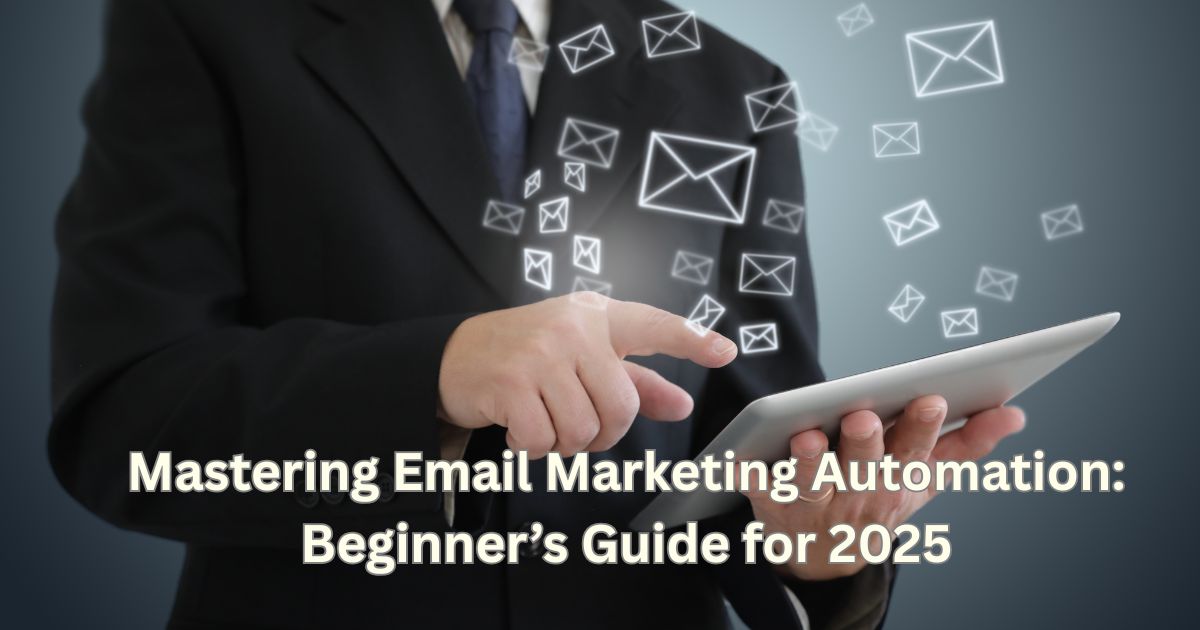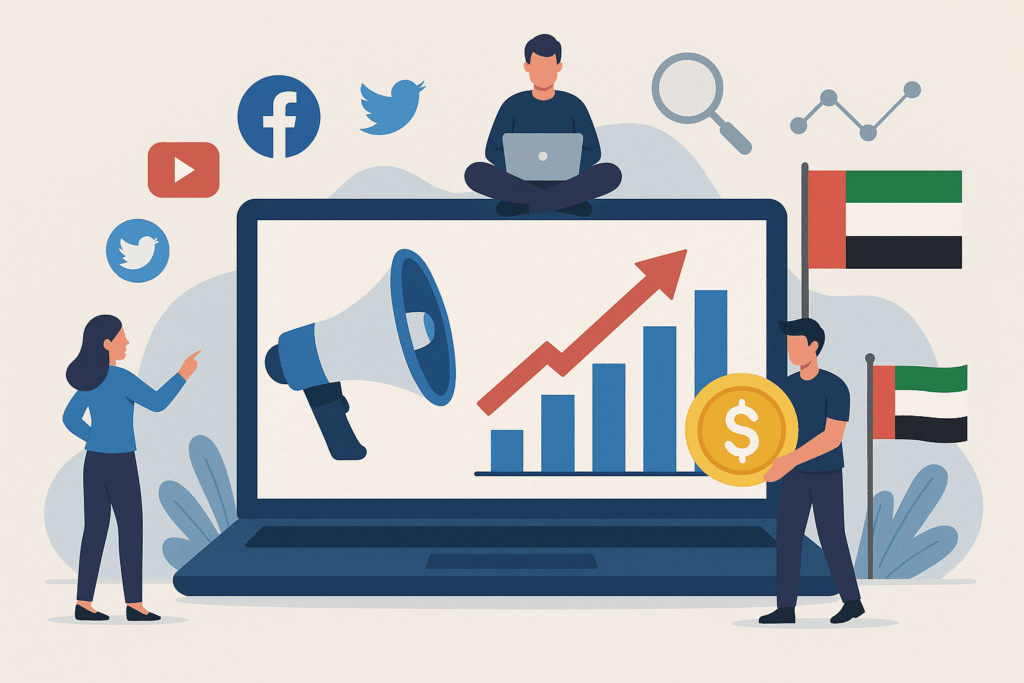In the fast-evolving digital landscape of 2025, email marketing automation is more than just a convenient tool—it’s a necessity for growth-minded businesses. As attention spans shrink and competition rises, brands need to communicate smarter and faster. This is where automation steps in, helping companies nurture leads, improve conversions, and build lasting customer relationships—without constant manual effort.
Whether you’re a small business owner exploring growth opportunities or a marketer seeking scalable tactics, mastering automation can redefine your entire customer communication strategy. This guide unpacks everything you need to know, from setting up your first campaign to choosing the right tools and optimizing your strategy for success.
What is Email Marketing Automation?
Email marketing automation is the process of sending targeted, behavior-driven emails to your audience automatically, based on triggers such as sign-ups, purchases, or user activity. Instead of blasting generic messages to everyone, automation lets you create highly personalized and timely communications that drive action.
By leveraging automated email marketing services, businesses can streamline their efforts and free up time for other important tasks—like content creation, sales, or customer service.
Why Automation is Game-Changer in 2025
The modern consumer expects timely, relevant messages—not spammy promotions. Personalized email marketing services are now at the core of customer engagement. With tools powered by AI email marketing services, brands can analyze user behavior, segment audiences, and tailor content with incredible precision.
Automated campaigns also provide better metrics and insights, allowing you to adjust your email marketing strategy in real time based on what’s actually working. For any email marketing agency or small business, automation isn’t just a bonus—it’s the backbone of scalable growth.
Key Benefits of Email Marketing Automation
- Time and Cost Efficiency
Automation saves countless hours that would otherwise be spent writing and sending individual emails. It also reduces the need to constantly monitor campaign performance manually. - Improved Targeting with Segmentation
A strong email segmentation strategy allows you to send different messages to different audience groups—boosting engagement, open rates, and conversions. - Consistent Communication
Maintain consistent brand presence without overwhelming your audience. Set up drip campaigns, welcome series, or abandoned cart reminders that run on autopilot. - Boosted Conversions
Timely messages often mean higher conversions. Whether it’s reminding someone about a left-behind cart or recommending a product they viewed, automation makes sure no opportunity slips by. - Scalable Growth
Whether you’re a freelancer or an email marketing company, automation lets you handle thousands of emails without adding extra team members.
Getting Started with Email Automation
Here’s a simple roadmap to help you kick off your automation journey.
1. Choose Right Tool
There are dozens of platforms offering automated email marketing services, each with unique features. Look for tools that offer:
- Drag-and-drop email builders
- Workflow automation
- CRM integration
- List segmentation
- A/B testing
- Detailed analytics
Popular tools include Mailchimp, Brevo (formerly Sendinblue), ActiveCampaign, and HubSpot. Many platforms offer Free SEO tools bundled with other marketing features, giving you even more value for your money.
2. Define Your Goals
Before setting up your first campaign, clarify what you want to achieve. Are you trying to:
- Welcome new subscribers?
- Recover abandoned carts?
- Promote a new product?
- Nurture leads through a funnel?
Your goals will determine how you build your automation workflows.
3. Build and Segment Your List
Email success starts with a clean, engaged list. Use opt-in forms, landing pages, and gated content to build your list. Then, segment it based on:
- Purchase history
- Demographics
- Engagement level
- Website behavior
This email segmentation strategy ensures that every message feels relevant, boosting trust and click-through rates.
4. Craft High-Quality, Personalized Content
Automation doesn’t mean impersonal. Use customer names, recommend relevant products, and include dynamic content that changes based on the recipient. Many e-commerce email marketing company platforms allow advanced personalization features to boost ROI.
5. Design Automated Workflows
Here are a few popular workflows to consider:
- Welcome Series: Greet new subscribers and introduce your brand
- Cart Abandonment: Recover lost sales
- Product Recommendations: Use purchase behavior to suggest products
- Re-engagement Campaigns: Win back inactive subscribers
- Post-Purchase Follow-up: Thank customers and ask for feedback
A professional email marketing services agency can help you design effective workflows tailored to your business.
6. Analyze and Optimize
Use platform insights to monitor open rates, click-through rates, bounce rates, and conversions. A smart email campaign management strategy constantly evolves based on performance data.
Test subject lines, sending times, CTAs, and layout designs. Don’t forget to align your efforts with broader digital strategies like those offered by a best digital marketing agency.
Best Email Marketing Practices in 2025
To maximize the impact of your automation campaigns, follow these best practices:
- Keep subject lines short and compelling
- Write mobile-friendly, scannable content
- Include only one clear CTA per email
- Stay consistent with your branding
- Comply with GDPR and privacy laws
- Use A/B testing frequently
- Monitor list health and remove inactive users regularly
These best email marketing practices will help you maintain engagement and avoid spam filters.
Who Should Use Email Automation?
Automation is suitable for:
- Startups wanting to scale outreach
- E-commerce stores aiming to increase repeat purchases
- Coaches and consultants nurturing leads
- A professional SEO services firm needing consistent client follow-ups
- Any business sharing newsletters or business articles regularly
Even job platforms or Job search websites can use automation to update users about new postings or application tips.
Choosing Right Email Marketing Partner
If handling automation on your own feels overwhelming, consider partnering with an email marketing company or a full-stack email marketing agency. These experts offer personalized email marketing services to plan, implement, and optimize your campaigns end-to-end.
A qualified email marketing services agency brings industry expertise, audience insights, and the latest tools—so you can focus on running your business while they grow your email ROI.
FAQs: Email Marketing Automation
Q1. What’s the difference between email marketing and email marketing automation?
Email marketing involves sending bulk or scheduled emails manually. Automation uses triggers and behavior data to send messages at the right time, automatically.
Q2. How often should I update my email workflows?
Review your workflows quarterly. Analyze performance metrics and update content, timing, or segments as needed.
Q3. Can email automation improve lead conversion?
Yes. Automated sequences like lead nurturing funnels and abandoned cart emails significantly boost engagement and conversion rates.
Q4. Is it expensive to get started with automation?
Not necessarily. Many platforms offer free or low-cost plans perfect for small businesses and startups.
Q5. Do I need technical skills to set up automation?
No. Most platforms offer intuitive, drag-and-drop builders and templates. Still, working with an email marketing services agency can speed up the process and improve performance.
In 2025, mastering email marketing automation isn’t just a strategy—it’s a superpower. As your audience grows more sophisticated, your communication needs to become smarter, faster, and more personalized. Whether you DIY your campaigns or hire a seasoned email marketing agency, the key is to start now, stay consistent, and always keep learning.
Are you ready to automate your email strategy and take your marketing to the next level? Share your thoughts or questions in the comments below!









